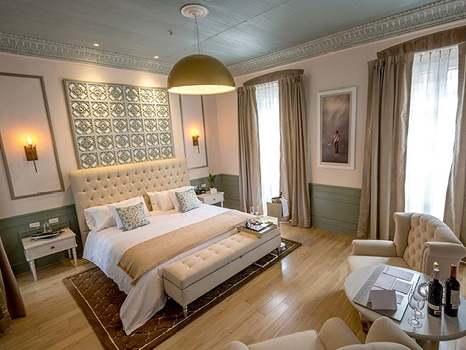In the coming days, as we journey toward the North Pole (83° latitude), you'll have the opportunity to witness incredible wildlife at sea and explore various landing sites. Below is an excerpt of what awaits you.
*Excursions are weather-dependent, and their order may vary based on ice conditions.
Kongsfjorden and Blomstrandhalvøya:
Blomstrandhalvøya, located on the northern side of the fjord, offers shelter and the opportunity to change plans if the weather changes. In the afternoon, you visit Ny Ålesund, one of the northernmost settlements on Earth. Once a mining village served by the world's most northerly railway – the tracks are still visible – Ny Ålesund is now a research center.
If you're interested in the history of Arctic exploration, visit the anchoring mast used by polar explorers Amundsen and Nobile in their airships Norge (1926) and Italia (1928). In the evening, we will head north along the coast, looking for whales.
The immense Monaco Glacier:
Depending on the weather, you could sail into Liefdefjorden, land at Texas Bar, and cruise within sight of the 5-kilometer-long (3.1 miles) face of the precipitous Monaco Glacier. The waters in front of this glacier are a favorite feeding spot for thousands of kittiwakes, and the base of the ice is a popular polar bear hunting ground. Another possibility is the mouth of Wijdefjorden, boasting both the tundra landscape and the glacier front of Nordbreen.
Or Sorgfjord, a reminder of hard times:
You may turn to Sorgfjord, with sunken French and Dutch ships (17th century) lying deep below the surface. You have the chance to find a herd of walruses someway west of the graves of 17th-century whalers at Eolusneset. A nature walk here can bring you close to families of ptarmigans. The opposite side of the fjord at Heclahamna is also a beautiful area for an excursion in a semi-desert region.
A stop at the Seven Islands:
At Phippsøya in the Seven Islands, you reach about 80° 30' north, just 870 km (540 miles) from the geographic North Pole. Polar bears and walruses inhabit this region. From here the ship sails northeastward toward the pack ice.
The northernmost point at 83 North:
In the evening, we expect to reach our northernmost point at the edge of the sea ice or some way into it. The landscape within the pack ice is a beautiful and moving world. At this latitude, it makes its way from the Polar Basin to the southwest and southward along the coast of Greenland.
In the fringes of the sea-ice:
Sailing southwest along and sometimes in the sea ice, we will enjoy fantastic opportunities to see bears, seals, various species of whale, and sometimes even the visually striking narwhal. On earlier voyages in this area, we have even encountered Ross's gulls, which winter in the Polar Sea.
Whalers from ages past:
At Zeeuwse Uitkijk on Ytre Norskøya, the remains of a whaling station can be found. Here, once Europe's most northernmost outpost, Dutch whalers processed whale blubber and buried their dead. We are not allowed to visit the vicinity of their gravesites, but we may walk to the top of the island, which offers splendid views across the open sea and on the kittiwake colony on the east side.
Bell Sund's flora, fauna, and haunting history:
Today, you find yourself in Bell Sund, one of the largest fjord systems in Svalbard. The ocean currents make this area slightly warmer than other areas in the archipelago, which shows in the relatively lush vegetation. Here, there are excellent opportunities to enjoy both history and wildlife.



















